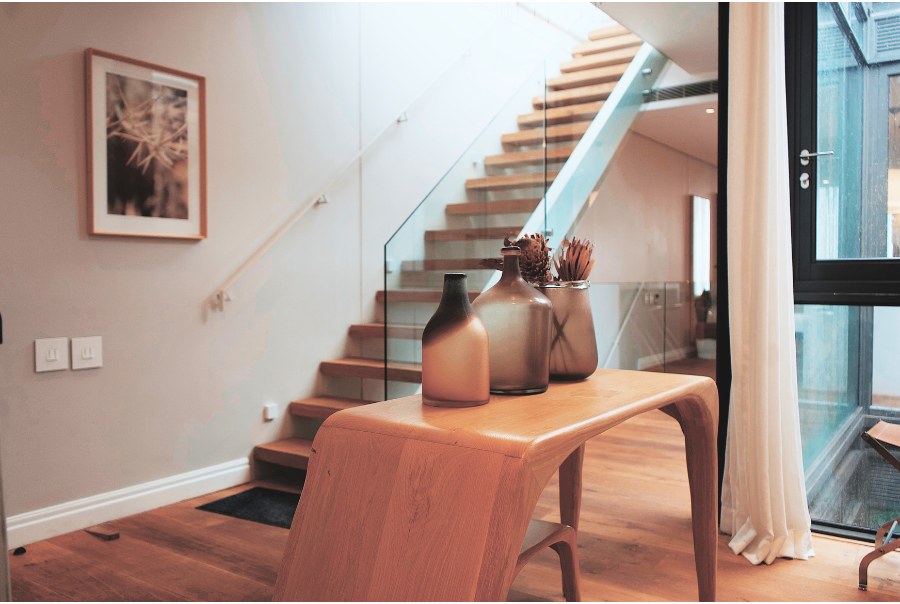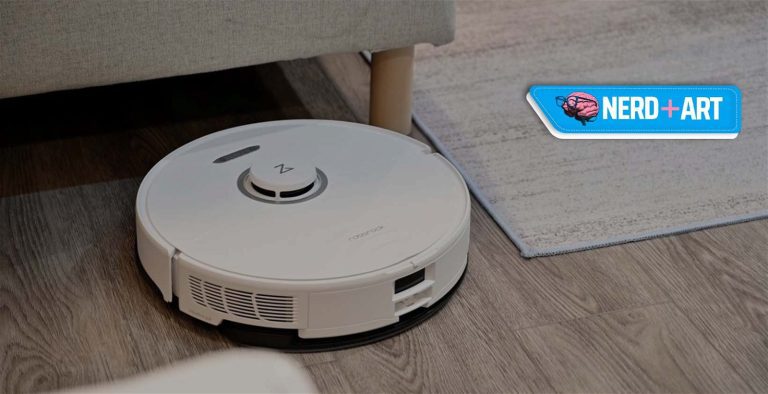Can You Use Robot Vacuum on Multiple Floors? Ultimate Guide

Yes, you can use a robot vacuum on multiple floors. You need to manually move it between floors.
Robot vacuums offer great convenience for multi-level homes. With advanced mapping technology, these devices can remember floor layouts. After moving the vacuum to a different floor, it will recognize the new environment. Some models even store multiple maps for easy switching.
This feature saves time and ensures thorough cleaning. Always check if your robot vacuum supports multi-floor mapping. Regular maintenance and updates keep it functioning optimally. Investing in a robot vacuum with multi-floor capabilities enhances home cleaning efficiency. These devices are a smart addition to any modern household.
Introduction To Robot Vacuums
Robot vacuums have become very popular. They help keep homes clean with little effort. Many people love their convenience. You can program them to clean at any time. They work on different types of floors. These smart devices save time and energy. They are also great for busy families.
Robot vacuums use sensors to move around. They detect obstacles and avoid them. Some models create a map of your home. This helps them clean more efficiently. The vacuum can remember where it has been. It ensures every corner is clean. These vacuums also return to their charging station automatically. This means they are always ready for the next job.
Multi-floor Homes And Cleaning Challenges
Robot vacuums can efficiently clean multiple floors with ease. Modern models often feature mapping technology and easy transitions between levels. Simplify your multi-floor home cleaning routine with these smart devices.
The Complexity Of Cleaning Different Floor Types
Different floors may have carpet, wood, or tiles. Each type needs a different cleaning mode. Robot vacuums can switch modes automatically. Some floors need more suction power. Others need gentle cleaning to avoid scratches. Sensors help the vacuum adjust to floor types.
Obstacles And Navigation Between Floors
Robot vacuums face challenges with stairs and doorsteps. Some models have mapping technology to remember floor layouts. This helps them navigate better. Cliff sensors prevent falling down stairs. You may need to carry the vacuum between floors. Some vacuums can store maps for multiple floors.
The Capability Of Robot Vacuums On Multiple Floors
Robot vacuums can clean different surfaces. They can handle carpets, tiles, and hardwood floors. Many models can automatically adjust their cleaning settings. This helps them clean better on each type of surface. The vacuum’s sensors help it detect the floor type. Some vacuums even have specific modes for different floors. These features make robot vacuums very versatile.
Robot vacuums have cliff sensors. These sensors prevent them from falling down stairs. The sensors detect edges and stop the vacuum. Many models have bump sensors too. These help the vacuum avoid furniture and other obstacles. Safety features ensure the vacuum can operate safely on multiple floors. They also protect your home and the vacuum itself.

Credit: www.ecovacs.com
Setting Up Your Robot Vacuum For Multi-story Homes
Place a docking station on each floor. This helps the robot find a home base easily. Ensure each docking station is in an open area. Avoid placing docking stations near stairs or obstacles. Doing this will improve the robot’s performance.
Some robots have multi-floor mapping. Check if yours supports this feature. Create a map for each floor. Save these maps in the robot’s memory. Name each map clearly, like “First Floor” or “Second Floor”. This makes switching between floors easy. Remember to update maps if furniture changes.
Practical Tips For Optimizing Multi-floor Use
Set up a cleaning schedule for each floor. Ensure the robot vacuum has enough battery life to complete each session. Program the vacuum to clean at times when rooms are empty. This avoids obstacles and improves performance. Regular cleaning keeps dust and dirt levels low.
Empty the dustbin after every session. Clean the brushes and filters weekly. Check for any tangled hair or debris that may block the sensors. Proper maintenance ensures the vacuum runs efficiently and lasts longer. Always check for software updates to improve functionality.
Credit: support.wyze.com
Limitations And Considerations
Robot vacuums need a strong battery to clean multiple floors. Battery life can vary by model. Check the specifications before buying. Some models may need charging stations on each floor. This helps them work efficiently without interruptions.
Robot vacuums can’t climb stairs. You will need to move the vacuum between floors. Some models have handles for easy lifting. This can be a bit of a hassle but ensures all floors are cleaned.
Advancements In Robot Vacuum Technology
Modern robot vacuums easily navigate multiple floors with advanced mapping and memory features. These devices seamlessly transition between levels, enhancing home cleaning efficiency.
Innovations Enhancing Multi-floor Capabilities
Robot vacuums have seen significant improvements. They now come with multi-floor mapping. This allows them to remember different floor layouts. Users can easily switch between floors. Just pick up the robot and move it. The vacuum then continues cleaning seamlessly. Some models even have automatic dirt disposal. This reduces the need for frequent maintenance. Enhanced sensors prevent falls and collisions. They can navigate better and clean more efficiently. This makes them perfect for homes with multiple stories.
Future Prospects: Fully Autonomous Multi-floor Cleaning
The future looks promising for robot vacuums. Fully autonomous models may soon be available. These vacuums will move between floors on their own. Perhaps using elevators or lifts. Smart home integration will improve. This will let vacuums communicate with other devices. Cleaning schedules will become even more efficient. AI advancements will make vacuums smarter. They will learn and adapt to different environments. Multi-floor cleaning will be more convenient than ever.
Choosing The Right Robot Vacuum For Your Multi-floor Home
A good robot vacuum should have multi-floor mapping. This feature lets the vacuum remember different floor plans. Strong suction power is important for cleaning carpets and hard floors. Battery life matters for larger homes. Look for a vacuum with longer battery life. Self-emptying dustbins can make maintenance easier. Smart navigation helps the vacuum avoid obstacles. Voice control can add convenience.
| Product | Multi-Floor Mapping | Battery Life | Self-Emptying | Voice Control |
|---|---|---|---|---|
| Vacuum A | Yes | 120 mins | No | Yes |
| Vacuum B | Yes | 150 mins | Yes | Yes |
| Vacuum C | No | 100 mins | No | No |
User Experiences And Testimonials
Many people have shared their success stories. Using robot vacuums on multiple floors is easy. They say it saves time and effort. Some users love the smart mapping feature. It helps the robot remember each floor. Others praise the long battery life. Their robots clean large homes without stopping. Families with pets find it very helpful. The robot picks up pet hair on all floors. Voice control is another favorite feature. You can command the robot from anywhere.
Some users face challenges with multi-floor cleaning. One common issue is stairs. Robots can’t climb stairs. Moving the robot between floors is necessary. Another problem is different floor types. Some robots struggle on thick carpets. Choose a robot that works on all surfaces. Battery life can also be a concern. Make sure the robot has enough power for your home. Many users suggest buying extra charging docks. Place them on each floor. This keeps the robot ready to clean.
Conclusion: Maximizing Your Robot Vacuum’s Potential
Maximizing your robot vacuum’s potential on multiple floors is possible with the right strategies. Ensure seamless transitions and maintain efficiency by following proper setup and maintenance practices.
Best Practices For Long-term Use
Ensure your robot vacuum lasts long by cleaning it regularly. Empty the dustbin after each use. Clean the brushes and filters weekly. Avoid wet areas to prevent damage. Charge the vacuum fully before each use. Keep the charging station in an open area. Use virtual walls to limit its path. Update the software for better performance. Store the vacuum in a cool, dry place.
The Verdict On Multi-floor Cleaning With Robot Vacuums
Robot vacuums can handle multiple floors well. Move the charging station to the desired floor. Ensure each floor is clutter-free. Program the robot for each floor’s layout. Use mapping features if available. Consider a robot vacuum with strong suction. This ensures better cleaning on carpets and hard floors. Multi-floor cleaning is possible with proper setup and maintenance.
Conclusion
Using a robot vacuum on multiple floors is not only possible but also convenient. With proper setup, these devices can efficiently clean different levels of your home. Invest in a high-quality model with smart mapping features. Enjoy a cleaner home with minimal effort and maximize your robot vacuum’s potential.


